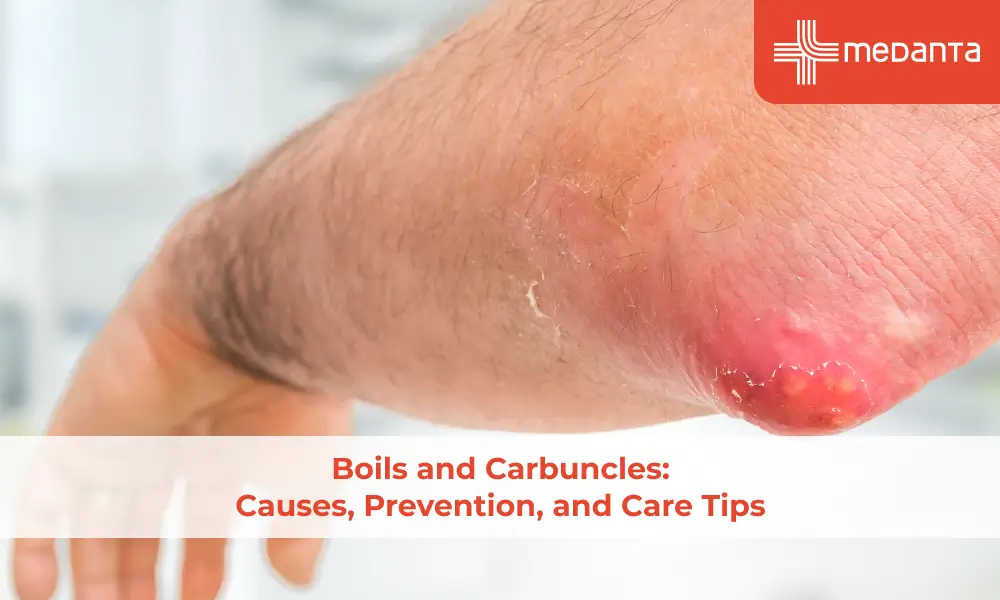Types of Skin Cancers and How to Detect Them Early

Do you know that the incidence of skin cancer has increased by 310% over the last 3 decades? Skin cancer, characterised by the abnormal growth of skin cells, typically arises on sun-exposed skin. However, it can also develop in areas not usually exposed to sunlight.
Three main types of skin cancer exist: basal cell carcinoma, squamous cell carcinoma, and melanoma.
To minimize the risk of skin cancer, it's advisable to limit or avoid exposure to ultraviolet (UV) radiation. Regularly inspecting your skin for any unusual changes aids in identifying skin cancer in its initial stages. Early detection enhances the likelihood of successful treatment for skin cancer.
Types of Skin Cancer
Listed below are the most common types of skin cancer found in humans:
1. Basal Cell Carcinoma (BCC)
Basal Cell Carcinoma, the most common form of skin cancer, typically manifests in areas exposed to the sun. While it rarely spreads to other parts of the body, early detection is crucial for effective treatment. Common risk factors include prolonged sun exposure, a history of sunburns, and a family history of skin cancer.
Warning signs of BCC involve changes in the skin's appearance, such as the development of a pearly or waxy bump, a flat, flesh-coloured or brown scar-like lesion, or a bleeding or oozing sore that doesn't heal. Regular self-examination is key, and any suspicious changes should prompt a visit to a dermatologist.
2. Squamous Cell Carcinoma (SCC)
Squamous Cell Carcinoma is another prevalent form of skin cancer, often appearing on areas exposed to the sun. It can also develop on scars, skin injuries, or chronic skin conditions. Risk factors include cumulative sun exposure, a weakened immune system, and exposure to certain chemicals.
Recognizing warning signs of SCC involves monitoring for persistent, red, scaly patches, elevated growths with a central depression, or open sores that crust or bleed. Individuals with a history of chronic skin conditions or exposure to carcinogens should be particularly vigilant in self-examinations.
3. Melanoma
Melanoma, though less common than BCC and SCC, is the most aggressive and dangerous form of skin cancer. It originates in the pigment-producing cells (melanocytes) and can spread rapidly to other parts of the body. High-risk groups include those with fair skin, a history of severe sunburns, and a family history of melanoma.
Warning signs of melanoma are often identified using the ABCDE rule:
A: Asymmetry
B: Border irregularity
C: Colour changes
D: Diameter growth
E: Evolution or changes over time
Regular self-examination and adherence to the ABCDE rule can aid in the early detection of melanoma, significantly improving prognosis and treatment outcomes.
General Warning Signs of Skin Cancer
Beyond the specific characteristics of each type, understanding general warning signs is crucial for comprehensive skin health. The ABCDE rule, developed to identify potential melanomas, can also be applied more broadly.
Asymmetry: Healthy moles or lesions are generally symmetrical, meaning one half mirrors the other. Asymmetry could indicate an abnormality.
Border irregularity: A well-defined, smooth border is characteristic of normal moles. Irregular, jagged, or poorly defined borders may suggest skin cancer.
Colour changes: Changes in colour, especially the presence of multiple colours within a mole or lesion, should be closely monitored.
Diameter growth: Moles or lesions larger than six millimetres in diameter may warrant closer attention. However, it's essential to note that melanomas can also be smaller, so any growth should be monitored.
Evolution or changes over time: Any evolution or changes in size, colour, or texture should prompt immediate attention. Regular self-examinations are crucial for detecting such changes.
Itching, tenderness, or pain can also be indicative of skin cancer. While these symptoms can be caused by various skin conditions, their persistence warrants professional evaluation.
Risk Factors for Skin Cancer
Understanding the risk factors associated with skin cancer is essential for proactive prevention. Key risk factors include:
Sun exposure: Prolonged exposure to UV radiation from the sun is a primary contributor to all types of skin cancer.
Family history: A genetic predisposition to skin cancer increases the likelihood of its development.
Fair skin and light eyes: People with fair skin, light eyes, and light hair are more susceptible to the harmful effects of UV radiation.
Immunosuppression: Individuals with weakened immune systems, whether due to medical conditions or medications, have an increased risk of skin cancer.
Use of tanning beds: Artificial tanning devices expose the skin to harmful UV radiation, contributing to the development of skin cancer.
Prevention Strategies to Combat Skin Cancer
Prevention is a powerful tool in the fight against skin cancer. Adopting the following strategies can significantly reduce the risk of developing skin cancer:
Sun protection measures: Use sunscreen with a high SPF, wear protective clothing, and seek shade during peak sun hours.
Regular skin self-examinations: Conduct monthly self-examinations to monitor for any changes in moles or skin lesions.
Annual dermatological check-ups: Schedule regular check-ups with a dermatologist, especially if you have a family history of skin cancer or other risk factors.
Importance of early intervention: Promptly seek professional evaluation for any suspicious changes in moles or skin lesions. Early detection greatly improves the chances of successful treatment.
Conclusion
In the quest for skin cancer awareness, recognising the warning signs of different types of skin cancer is a crucial step towards early detection and effective treatment. Understanding the distinct characteristics of Basal Cell Carcinoma, Squamous Cell Carcinoma, and Melanoma, as well as the general warning signs, empowers individuals to take control of their skin health.
Regular self-examinations, adherence to prevention strategies, and seeking professional evaluation for any concerning changes are integral components of a proactive approach to skin cancer. By staying informed and vigilant, individuals can unmask the threat of skin cancer and ensure the longevity of their skin health.
Visit your nearest Tertiary Care Hospital for expert skin cancer evaluation and care. Your well-being matters a lot, so take the necessary steps to look after your skin and any problems that may arise!






